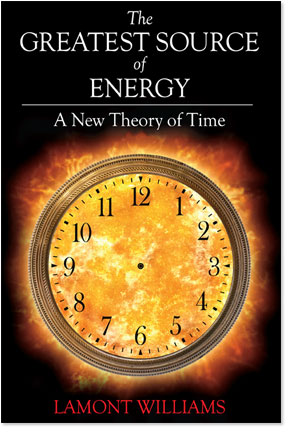Book Description
The Greatest Source of Energy describes a new method for combining the two most powerful theories in science — General Relativity and Quantum Mechanics — into what has been called the Theory of Everything.
The foundation of the method is a new model of time — called Temporal Energy Theory — that unites the concept of time as a relative phenomenon with the concept of time as an absolute and universal phenomenon.
The book describes how General Relativity and Quantum Mechanics are likely describing the same temporal process but from opposite perspectives. Under this condition, the relative and universal natures of time do not clash, but rather coexist.
If Temporal Energy Theory is proven to be correct, it will have redeemed Newton’s idea of a universal background clock, without taking anything away from Einstein’s idea that time is relative.
The benefits of successfully combining General Relativity and Quantum Mechanics are endless, but a way to bridge the gap between these two theories has been elusive for many years. The Greatest Source of Energy breaks new ground in the intense work on unification and may put us on a path to a better understanding of the universe.
In addition, the book discusses the possible physical nature of such factors as mass, charge, and spin. It also provides a unique perspective on particle transformations, what may constitute dark matter and dark energy, as well as what may have come before the Big Bang.
Sample Pages
Order The Greatest Source of Energy
FAQs
Below is a list of frequently asked questions and their answers.
Q1. In the book, you give a gross estimate of G as 6.7×10−11 m3/kg-s2. Why is that?
A1. The idea here was simply to show a relationship between Planck length and electron mass in determing the value of G. As such, gross estimates were used in relation to that length and mass, leading to the gross estimate of G.
Q2. In the book, you say that W bosons are neutrinos and quarks. However, that makes it seem as though you're saying bosons are fermions. Can you explain?
A2. The idea here is that in the framework described, it is neutrinos and quarks that are actually doing the work we associate with virtual W bosons. It was not meant to suggest that an (interger spin) boson is a (half-integer-spin) fermion. It is sort of like saying, "Dad is Santa Claus." Dad is not really Santa Claus. He simply performs the work we attributed to him. Similarly, a fermion is not a boson. It is just that neutrinos and quarks actually perform the work in particle transfomations attributed to W bosons, according to the theory described.
Q3. You mention the Higgs boson, but you seem to describe a different mechanism by which particles attain mass. Can you explain?
A3. There is a Higgs field within the work presented. The field is simply linked to the temporal dimension of Einstein's spacetime, rather than existing as a separate field. The main area where the two concepts diverge is what would constitute a Higgs boson, and thereby how such a boson would decay. In the presented work, a Higgs boson would be incapable of decaying into Standard Model particles. It is the author's belief that the boson found at the Large Hadron Collider (LHC) is not a Higgs boson, but an exotic Standard Model particle. Supporting this is the fact that the Higgs boson in the presented work requires no fine-tuning with regard to its mass. Such a Higgs boson would be particularly massive if produced in collider experiments, as the established Higgs theorectical work suggests. In constract, the LHC boson requires fine-tuning of the boson's mass, but with no explanation as to how that is occurring. This remains a mystery linked to the LHC particle.









